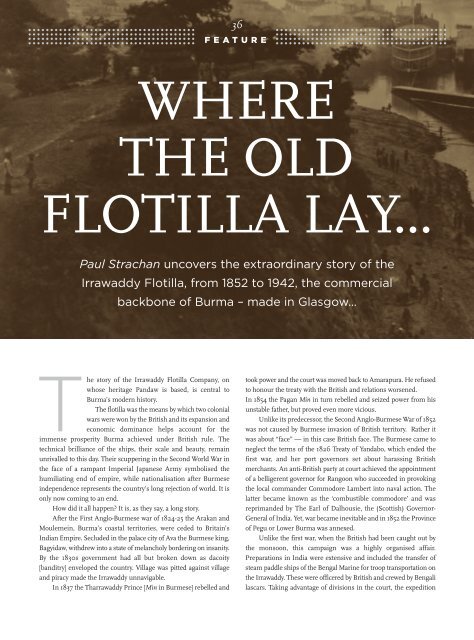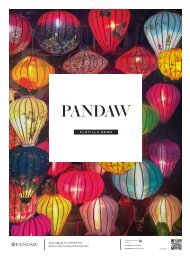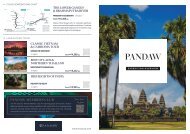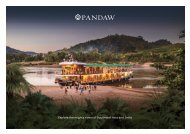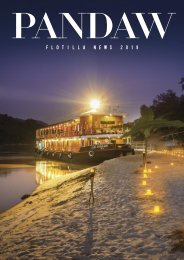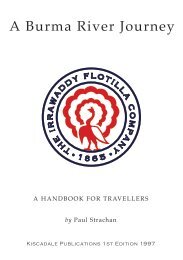Pandaw Magazine
Pandaw magazine 2016.
Pandaw magazine 2016.
You also want an ePaper? Increase the reach of your titles
YUMPU automatically turns print PDFs into web optimized ePapers that Google loves.
36<br />
F E A T U R E<br />
WHERE<br />
THE OLD<br />
FLOTILLA LAY...<br />
Paul Strachan uncovers the extraordinary story of the<br />
Irrawaddy Flotilla, from 1852 to 1942, the commercial<br />
backbone of Burma – made in Glasgow…<br />
The story of the Irrawaddy Flotilla Company, on<br />
whose heritage <strong>Pandaw</strong> is based, is central to<br />
Burma’s modern history.<br />
The flotilla was the means by which two colonial<br />
wars were won by the British and its expansion and<br />
economic dominance helps account for the<br />
immense prosperity Burma achieved under British rule. The<br />
technical brilliance of the ships, their scale and beauty, remain<br />
unrivalled to this day. Their scuppering in the Second World War in<br />
the face of a rampant Imperial Japanese Army symbolised the<br />
humiliating end of empire, while nationalisation after Burmese<br />
independence represents the country’s long rejection of world. It is<br />
only now coming to an end.<br />
How did it all happen? It is, as they say, a long story.<br />
After the First Anglo-Burmese war of 1824-25 the Arakan and<br />
Moulemein, Burma’s coastal territories, were ceded to Britain’s<br />
Indian Empire. Secluded in the palace city of Ava the Burmese king,<br />
Bagyidaw, withdrew into a state of melancholy bordering on insanity.<br />
By the 1830s government had all but broken down as dacoity<br />
[banditry] enveloped the country. Village was pitted against village<br />
and piracy made the Irrawaddy unnavigable.<br />
In 1837 the Tharrawaddy Prince [Min in Burmese] rebelled and<br />
took power and the court was moved back to Amarapura. He refused<br />
to honour the treaty with the British and relations worsened.<br />
In 1854 the Pagan Min in turn rebelled and seized power from his<br />
unstable father, but proved even more vicious.<br />
Unlike its predecessor, the Second Anglo-Burmese War of 1852<br />
was not caused by Burmese invasion of British territory. Rather it<br />
was about “face” — in this case British face. The Burmese came to<br />
neglect the terms of the 1826 Treaty of Yandabo, which ended the<br />
first war, and her port governors set about harassing British<br />
merchants. An anti-British party at court achieved the appointment<br />
of a belligerent governor for Rangoon who succeeded in provoking<br />
the local commander Commodore Lambert into naval action. The<br />
latter became known as the ‘combustible commodore’ and was<br />
reprimanded by The Earl of Dalhousie, the (Scottish) Governor-<br />
General of India. Yet, war became inevitable and in 1852 the Province<br />
of Pegu or Lower Burma was annexed.<br />
Unlike the first war, when the British had been caught out by<br />
the monsoon, this campaign was a highly organised affair.<br />
Preparations in India were extensive and included the transfer of<br />
steam paddle ships of the Bengal Marine for troop transportation on<br />
the Irrawaddy. These were officered by British and crewed by Bengali<br />
lascars. Taking advantage of divisions in the court, the expedition


